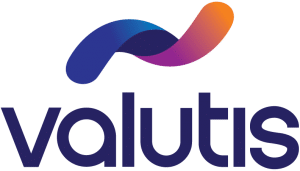Thomas Clarkson stood on the factory floor of Clayton Manufacturing and faced a reality most CEOs never want to confront. Sales were plummeting. Key workers were walking out the door. Morale had hit rock bottom.
His company—a once-proud producer of construction materials—was in late decline. Moreover, the clock was ticking.
The board wanted answers. Investors wanted results. His team wanted hope. However, Thomas knew that vague promises and incremental changes wouldn’t save Clayton. He needed a targeted transformation, and he needed it fast.
What happened next offers a blueprint for any leader facing a similar crossroads.
The Brutal First Decision
Thomas’s first major move was also his most painful: cutting several long-standing but underperforming product lines.
These weren’t just revenue streams, they were foundational to Clayton’s identity. Some had been in the product catalog for decades. Cutting them felt like abandoning the company’s heritage.
But Thomas recognized a truth that many leaders struggle to accept: What built your past won’t necessarily fund your future.
Instead of clinging to declining products, he redirected Clayton’s focus toward developing advanced, sustainable materials that met new environmental standards and emerging market demands. It was a bold pivot that demonstrated both courage and clear strategic vision.
Innovation Huddles: Systematic Idea Generation
Thomas understood something critical: transformation can’t be mandated from the top alone. Furthermore, the best ideas for revival often come from people closest to the work.
He introduced “Innovation Huddles” regular meetings where employees at all levels were encouraged to bring forward new ideas. This wasn’t just suggestion-box theater. To add impact, Thomas showed up, participated, and humbly admitted past mistakes about overlooking market shifts.
The result? A culture shift from fear and resignation to openness and collaboration. Ideas started flowing. People who had been quietly disengaged began contributing again. The company’s revival was becoming a shared mission, not just a CEO mandate.
The Strategic Pivot That Changed Everything
As the construction industry evolved, Thomas saw opportunity others were missing: the shift toward eco-friendly solutions.
He formed partnerships with green technology firms to integrate sustainable innovations into Clayton’s products. This wasn’t just a marketing angle, it fundamentally enhanced the functionality and appeal of what Clayton manufactured.
The strategic shift accomplished three things simultaneously:
It attracted new customers who valued sustainability
It repositioned Clayton as a market leader rather than a follower
It created differentiation that competitors couldn’t quickly replicate
Despite skepticism from both inside and outside the company, Thomas remained steadfast. His tenacity paid off as the new product lines began gaining traction, slowly stabilizing financial health and rebuilding investor trust.
Transparent Communication: The Glue That Held It Together
Throughout this period of intense change, Thomas committed to something many leaders skip: transparent communication about every step, every challenge, and every bit of progress.
He knew that uncertainty breeds fear, and fear breeds resistance. By regularly updating stakeholders—from the board to the factory floor—he built trust and fostered a unified approach to overcoming Clayton’s challenges.
He didn’t sugarcoat the difficulties. Instead, he acknowledged them while painting a clear picture of where they were headed and why the pain was worth it.
Taking Care of People During Chaos
Thomas also recognized something crucial: change is exhausting, especially when people have already been through the trauma of decline.
To address this, he launched initiatives aimed at boosting morale and engagement:
- New recognition programs that celebrated both results and effort
- Expanded professional development opportunities
- Clear communication about who fit where in the new vision
- Support systems for those struggling with the transition
These weren’t HR initiatives for the sake of checking boxes. They were strategic investments in keeping the right people engaged during the hardest period of transformation.
The Flagship Launch: Proof of Concept
Eighteen months into the transformation, Clayton launched a flagship product: a durable, eco-friendly building material that set new standards for sustainability and efficiency in the construction industry.
This innovation marked Clayton’s comeback as a category leader. More importantly, it proved that Thomas’s systematic approach was working. The company hadn’t just survived, it had repositioned itself for sustained growth.
Why This Worked When Other Turnarounds Fail
Thomas’s success wasn’t luck. It was the result of following a systematic framework that integrated three critical elements:
Strategic Clarity – Cutting what didn’t work, pivoting to where the market was going
Talent Alignment – Innovation Huddles brought the right ideas from the right people
Leadership Evolution – Thomas adapted his style to what the situation required
He also did something most leaders struggle with: he matched his approach to where Clayton was on the S-Curve, not where he wished it was.
Late Decline requires different tactics than Mature Growth or Pinnacle. Thomas recognized Clayton’s true position and acted accordingly—with urgency, boldness, and systematic execution.
The Three Phases of Implementation
Looking back, Thomas’s transformation followed a clear pattern that any leader can replicate:
Phase 1: Diagnosis and Direction (Months 1-3)
- Honest assessment of current position
- Difficult decisions about what to cut
- Clear vision for where to pivot
- Communication plan for bringing people along
Phase 2: Systematic Execution (Months 4-12)
- Innovation Huddles creating idea pipeline
- Strategic partnerships building new capabilities
- Transparent communication building trust
- Morale initiatives keeping people engaged
Phase 3: Validation and Momentum (Months 13-18)
- Flagship product launch proving concept
- Market response validating direction
- Team confidence rebuilding
- Investor trust returning
Each phase built on the previous one. There were no shortcuts, no magic bullets—just systematic execution of a clear plan.
The Implementation Challenge Most Leaders Face
Here’s what separates leaders like Thomas from those who talk about transformation but never execute it: he had a systematic process and the discipline to follow it.
Most leaders struggle not with understanding what needs to change, but with implementing change while keeping operations running. They get stuck because they try to figure it out alone, or they lack the frameworks to move from insight to action.
Thomas succeeded because he understood that transformation requires:
- A clear diagnostic framework (find your Location on the S-Curve)
- Context-driven talent alignment (right CORE profiles for the work ahead)
- Systematic implementation (structured process, not random initiatives)
- Outside perspective (fresh eyes on entrenched problems)
Your Clayton Moment
Where is your company right now?
Are you like Clayton was, in decline and running out of time? Or are you like CarterTech, successful but sensing your innovative edge is dulling? Perhaps you’re like John Mitchell, comfortable but wondering if this is as good as it gets?
Wherever you are, the question is the same: Do you have a systematic process for making the transition, or are you hoping effort and good intentions will be enough?
Thomas’s story proves that larger transformations are possible. However, it also shows that it requires more than just insight—it requires structured implementation with clear frameworks, disciplined execution, and often an outside perspective to see what you’re too close to notice.
The Bridge from Insight to Action
Over the past three weeks, we’ve covered:
Week 1: Recognition – When your best people stop bringing bold ideas
Week 2: Diagnosis – Understanding where you are on the S-Curve
Week 3: Solution – Matching talent CORE to business needs
This week: Implementation – The systematic process that turns insight into results
The pattern is clear: Insights without implementation don’t create movement.
That’s exactly why I created the Growth Accelerator—a one-day intensive designed to help leadership teams move from insight to systematic action.
What The Growth Accelerator Provides
In one intensive day, your leadership team will:
- Diagnose your exact S-Curve position using the same assessment tools that helped leaders like Thomas and John
- Assess your current talent alignment through CORE profiling of your key people
- Identify your three critical bottlenecks that are preventing the movement you need
- Build a 90-day action plan with clear ownership and measurable milestones
- Leave with systematic frameworks you can immediately implement
This isn’t a motivational session that creates energy but no clarity. It’s a working session that produces actionable plans and measurable next steps.
The Growth Accelerator is designed for leadership teams who:
- Know they need to make a transition but aren’t sure where to start
- Have insights about what needs to change but struggle with implementation
- Want to move faster than they’re currently moving
- Need an outside perspective to see their blind spots
- Are ready to invest one day to save months of frustration
Your Next Step
Thomas Clarkson’s story shows what’s possible when you combine systematic frameworks with disciplined execution. His success wasn’t about working harder—it was about working more deliberately with the right process.
The question is: Are you ready to stop figuring it out alone and start implementing systematically?
The Growth Accelerator intensive is launching soon. If you’re ready to move from insight to action, contact me here to schedule a 30-minute conversation to see if it’s the right fit for your leadership team.
Your people are waiting for you to provide the clarity and direction they need. The systematic process exists. The question is whether you’re ready to use it.
Don’t let another quarter pass without the movement your business needs. The Growth Accelerator provides the systematic approach that turns insights into results. Let’s set up a call to discuss it.



